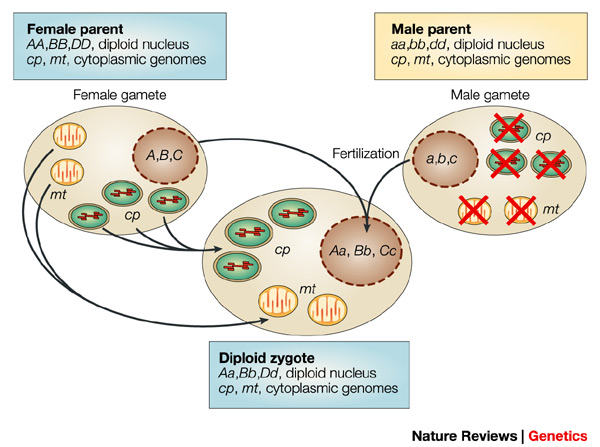The idea arose as a method to increase fertility in mothers with high risk factors for certain mitochondrial diseases and allow their children to be unaffected.
When most people think of genes, they think of DNA packed within the nucleus that gives rise to proteins that help cells, and in turn, organisms, function. But the cell's genome also contains DNA that associates with other organelles and are passed from generation to generation by cytoplasmic inheritance, particularly in the mitochondria.
In nature, the offspring inherit 100% of their mitochondrial DNA from their mother's egg, since the fertilized egg contains the mother's cytoplasm and organelles.
 |
| This image, borrowed from the Nature Education website shows the transmission of mitochondrial DNA from mother to zygote (offspring). The chloroplasts and mitochondria are crossed out in the father's gamete because they are not transmitted. Only the father's nucleus fertilizes the egg. |
The FDA's approval would permit clinical trials to be run.
Some find that these "3 Parent Babies" may be a cure for infertility, or an increase in the quality of life for offspring, but others see it as a landmark for genetic engineering, and a bad one at that, according to CNN's article "FDA considering '3-parent babies'."
No comments:
Post a Comment